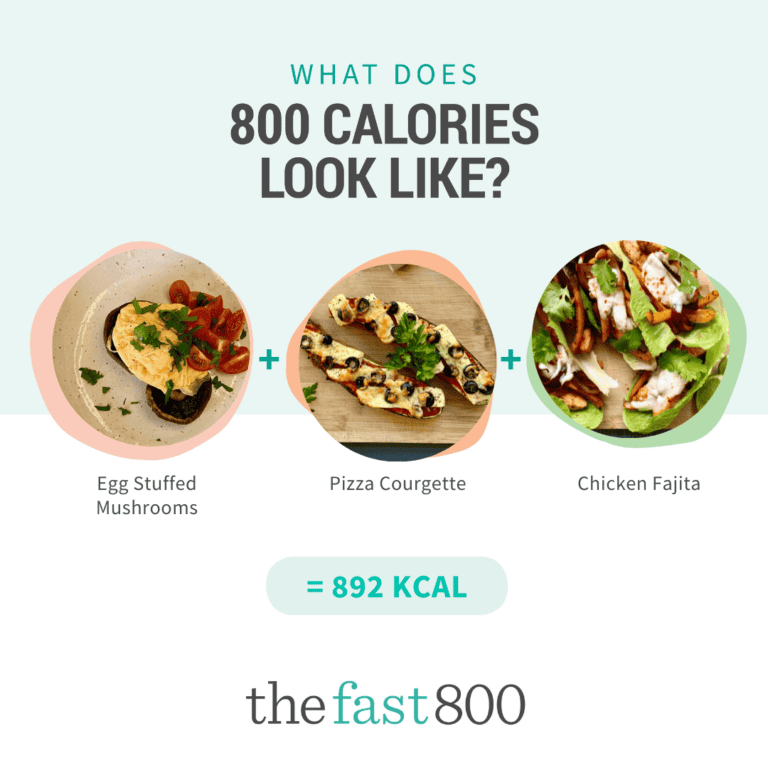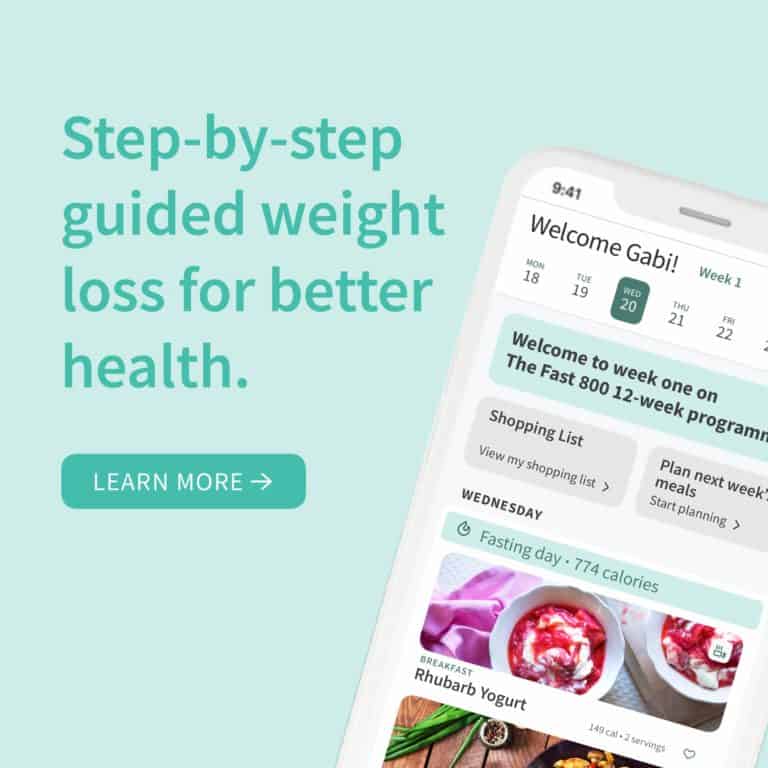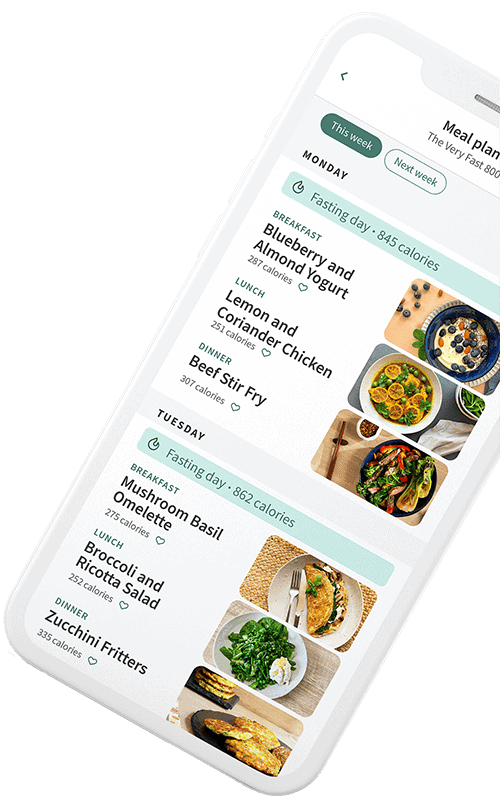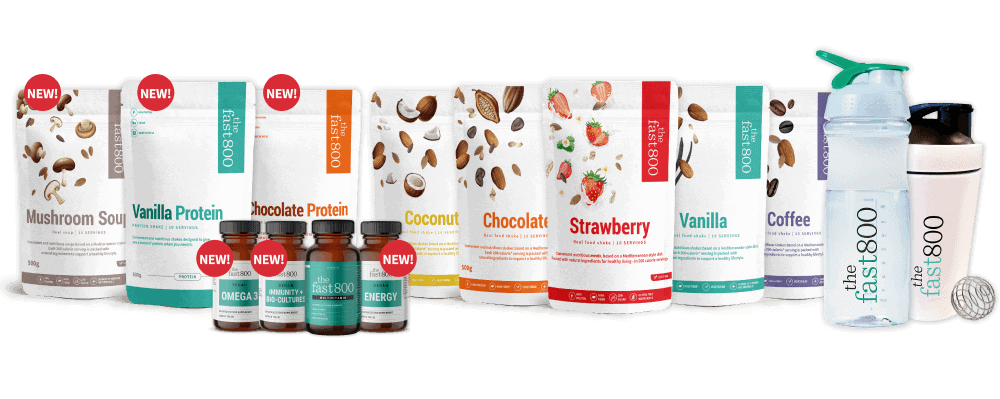How To Do Intermittent Fasting
What is Intermittent Fasting?
Intermittent fasting consists of following an eating pattern where you either refrain from consuming calories in any form daily for a period of hours, or significantly reduce your calorie intake across your day. How you do intermittent fasting depends on the method you feel is right for you.
How does it work?
Fasting is an age-old practice, used throughout history and across the world for religious, spiritual and cultural practices. It is an eating pattern that is now commonly adopted for the purpose of losing weight, through the use of either TRE (time-restricted eating), 5:2 fasting, or alternate fasting.
These days, food is available to us 24/7, and it’s led to a habit of grazing, snacking and overeating. The idea behind all three fasting approaches is that you are giving your body a break from digesting food, and reducing your calorie intake. Our body most effectively rests and repairs when it isn’t trying to process food through digestion. This already happens while you’re asleep which counts towards your period of fasting, but intermittent fasting expands this usual fasting window further into the day, resulting in a longer period of rest and repair for your brain and body.
Fasting can put your body into a state of ketosis, similar to when following a keto diet, when your body begins to burn fat as its main fuel, instead of the glucose most commonly found in carbohydrates. This process is known as ‘flipping the switch’. Once this switch has occurred, fat is turned into ketone bodies in the liver, which are released into the bloodstream to generate energy until we begin eating carbohydrates again. The process of burning fat instead of carbohydrates is why inducing ketosis through either a keto diet or intermittent fasting is so effective for dramatic weight loss.
Home tests can be done to determine whether your fasting has entered your body into ketosis or not, as well as natural indicators such as decreased appetite (which can help with fasting, if you’re not used to it), dry mouth, frequent urination and increased thirst.[1]
The most common intermittent fasting approaches are:
TRE (time-restricted eating)
A popular form of fasting which is considered easy to follow and is encouraged while following any of the approaches on The Fast 800. This method involves reducing the hours in which you consume calories (your eating window) and not consuming calories in any form outside of that (your fasting window). Many people choose to take their fasting window overnight while they sleep and break their fast later in the morning, or finish their evening meal earlier. Often you’ll see TRE expressed as “fasting window:eating window”. For example, 12:12 may mean you consume calories anywhere within a window of 12 hours, like 8am-8pm, and fast for 12 hours between 8pm-8am. Some people may choose to extend their fasting window even further, however, we recommend fasting a maximum of 16 hours to be sustainable long-term (expressed as 16:8, which, for example, may be eating between 12-8pm).
5:2 fasting
The 5:2 method of intermittent fasting, made popular by Dr Michael Mosley, places emphasis on reducing calories on two days of the week. While it’s evolved over the years, The New 5:2 involves two “fasting” days per week, where you consume about 800 calories of healthy and nutritious Mediterranean-style food and eat sensible portions of similar food with no caloric restriction for the remaining five days.
Alternate day fasting
This involves switching between eating with no calorie restriction on one day, to consuming zero calories the next. On The Fast 800, we do not encourage this method for two reasons: there’s no significant benefit to fasting for longer than 16 hours, and consuming no calories at all for up to or beyond 36 hours is incredibly challenging for most people.
Join our email community
Learn more about The Fast 800 approach to healthy living by receiving our free content, health tips and recipes as well as exclusive offers, delivered straight to your inbox.
Benefits of intermittent fasting
Though fasting has been practised for hundreds of years, intermittent fasting has become significantly more popular in recent years due to an impressive amount of scientifically-proven benefits.
There is mounting evidence that intermittent fasting may lead to:
-
- Improved insulin response, reducing type 2 diabetes risk
Type 2 diabetes occurs when we exceed what is known as our ‘personal fat threshold’ and as fasting reduces the size of your fat stores, it brings you back from your ‘personal fat threshold’.[2][3]
- Better quality of sleep
Research has shown that sleep, and subsequent daytime performance, may improve after just one week of intermittent fasting. In particular, fasting short-term can reduce restlessness, awakening throughout the night, and leg movement during sleep.[4]
- Reduction in inflammatory arthritis
Researchers say intermittent fasting can reduce inflammation in the body, which helps reduce the risk of many different diseases, including arthritis.[5] The reduction is due to a reduction in ‘monocyte’ cells during fasting, which is the cause of inflammation.
- Maintenance of muscle mass during weight loss
If you make sure you’re consuming enough protein during an intermittent fast diet (we’ll talk more about that later), studies have suggested that it can actually help maintain muscle mass during weight loss better than non-fasting diets. [6]
- Reduced risk of brain disease, such as Parkinson’s and dementia.
Fasting diets show promising results on neurobiological health, including a reduced risk of brain diseases such as Parkinson’s, dementia and anxiety disorders. [7]
- Improved insulin response, reducing type 2 diabetes risk
Intermittent fasting and weight loss
Alongside the many other health benefits, intermittent fasting can be extremely effective for rapid weight loss, and maintaining weight loss. The main reason being that it helps you eat fewer calories.
Many believe that eating ‘little and often’ is the key to increasing your metabolic rate and losing weight, however, this will likely lead to raising blood sugars throughout the day. There are plenty of studies that prove that the amount of calories you burn is not dependent on how frequently or infrequently you eat.
In fact, a systematic review of 40 studies found that intermittent fasting resulted in a typical loss of 7-11 pounds in 10 weeks, and studies show a 4-7% reduction in waist circumference.
Due to eating far fewer calories, and reducing your blood sugar spikes throughout the day, all three approaches we promote at The Fast 800 can help you lose dramatic weight. It’s about finding an approach that works best for you, and they each have their pros and cons. In particular, when it comes to maximum weight loss, research shows that alternate-day fasting with endurance exercise may cause twice as much weight loss than simply fasting.[11]
The biggest risk when intermittent fasting for weight loss is overeating when you’re in your eating window. This can occur because, unless your body enters ketosis, the hunger hormone ghrelin can lead you to feel like you should eat more at mealtimes.[12] It’s for this reason that it can be so helpful to have a meal plan like the ones on our Online Programme, so you can pre-plan portioned meals that are specifically designed to keep you full enough throughout the entire day and prevent overeating later on.
How to implement intermittent fasting
If you’re brand new to fasting and want to improve your metabolic health and lose weight, we recommend starting with either The New 5:2, TRE or a combination of both.
When following The New 5:2, your fasting days are likely to need the most planning to ensure you’re getting the nutrients your body needs, while limiting your calorie intake. Our Online Programme has meal plans available for you to take the planning away however, we always advise you eat between 50-70g protein on 800-calorie days. Here’s an example of what a fasting day might look like:

When starting with TRE, it’s important to take it slow and begin with 12:12 – you may even find that you already do this naturally. Over time, as your body becomes familiar with fasting, you may want to gradually extend your fasting period by an hour or two each day until you reach 14:10 or 16:8. When extending a fasting window to follow a 14:10 or 16:8 pattern, some people prefer to eat two meals a day, rather than three; however, there is no scientific evidence that places one above the other so your method should be determined around what works best for you and your lifestyle.
Tips for beginners
If you’re new to intermittent fasting, it can feel overwhelming or too difficult to commit to. However, we have a few tricks up our sleeve that can help ease you in if you’re a fasting beginner.
1. Gradually extend your fasting window – as we said above, when you’re new to time-restricted eating, it can help to try a 12:12 method of fasting for 12 hours and eating for 12 to ease yourself in. Then build up to 14:10 or 16:8 as you get more confident with the approach.
2. Make sure you’re eating enough protein – protein is key to weight loss, and it becomes even more important when you’re using intermittent fasting as your method of shedding excess weight. We typically recommend 60g of protein a day to reap the benefits, like helping keep you fuller for longer. On fasting days, it can be difficult to get in that amount of protein, so we developed our Keto Protein Powder shakes to be a fasting-friendly protein boost to have alongside your meals.
3. Stay hydrated – staying hydrated is essential when fasting, as it can help make sure you’re not getting thirst and hunger signals confused. Having herbal teas on hand can also provide a little sweet treat if you’re used to having an evening dessert.
4. Plan meals in advance – planning your meals ahead of time for when you know you’ll be breaking your fast can help to ensure you don’t accidentally overeat. Our Online Programme has meal plan options depending on whether you’re choosing to try intermittent fasting or not, and our in-house nutritionists have developed hundreds of delicious recipes that are perfect for fitting around a fast.
What to eat and drink during your fasting windows
In periods of no calorie intake, like TRE fasting windows, there are still a few things you can enjoy without worrying about breaking your fast.
- Water – staying hydrated while fasting is incredibly important. We get around 20 per cent of our fluids from food and if you’re limiting your calorie intake, you need to compensate for this reduction. Additionally, if you’re opting to exercise, or simply increase your activity, alongside your fasting regime, you’ll need to consider how much you sweat (more so if you have a higher starting weight) and increase your water intake to stay effectively hydrated.
Tip: Add lemon, lime or ginger to your water if you want to add a little more flavour. - Black coffee and tea – For fasting, black tea and coffee are great as they have virtually no calories. If you are a coffee lover, be mindful of your caffeine intake – we recommend no more than two cups of coffee a day.
- Sparkling water – Carbonated water is a good option if you want to mix up your drinks. The bubbles can often make you feel full and keep you away from the snack cupboard.
Drinks to avoid
- Diet drinks – Although they have zero calories, they certainly do not have zero ingredients. They maintain your sweet tooth and keep you craving the sugary stuff!
What to eat and drink during your eating windows
Here at The Fast 800, we highly encourage you to avoid snacking and instead enjoy filling and nutritious meals that will see you through and keep you satiated until your next sitting.
Although snacking is intended to suppress hunger and fill any gaps, it actually does the opposite.
Every time we eat, the carbohydrates in foods are broken down into sugars, which are intended to be used as energy. Each time this happens, our bodies respond by releasing insulin, which helps us use glucose as fuel.
However, the more this happens, the more we become resistant to insulin, and the less effective insulin becomes at retrieving and using glucose. This leaves excess glucose in the body, which prompts the body to hang on to existing fat, and store more, as energy reserves for the future. Without being able to use glucose as an immediate source of energy, we become tired, hungry and the desire to snack is raised again. It really is quite a vicious cycle.
How can you help manage this?
By reducing your snacking habits. While it may be tricky at first, you’ll soon find a routine that means you won’t feel hungry between meals. Additionally, many people find that once they have flipped the metabolic switch, they naturally don’t feel as hungry as they ordinarily would due to the reduction in the hunger hormone, ghrelin, which makes it much easier to avoid cravings.
Another way is to make sure you’re eating foods low in simple carbohydrates and high in protein and quality fats.
During eating windows, a Mediterranean-style diet is recommended. It is satisfying, delicious and has time and time again been recognised to be the healthiest diet in the world. Try some of these recipes, developed by our in-house nutritionist, or sign up to the Online Programme for over 700 more.
FAQs
Can I have a dash of milk in my tea or coffee?
If you’re following Time Restricted Eating (TRE) and you’re unsure if you can manage without your morning cup of tea or coffee with milk, you can have one cup outside of your eating window with a dash of full-fat milk (less than 30ml, which is around 20 calories) without it being detrimental. If you’re following any of the approaches that have fasting (800-calorie) days, like The Very Fast 800, The Fast 800 Keto or The New 5:2, it’s important to take the calories of your milk into consideration if you’re having multiple cups of tea or coffee throughout the day.
Can I exercise while fasting?
Yes, you can, but bear in mind that there are pros and cons of exercising while on a fast. You may burn more fat if you exercise during intermittent fasting, and it has been shown to potentially boost energy levels by burning fat for fuel. However, there is a slight risk of losing some muscle mass if you exercise while fasting, which is why it’s so important to keep your protein intake high when you do break your fast.
Will tablets break my fast?
No, having tablets will not interrupt your fasting period. However, some tablets are required to be taken with food at certain times of day, so if you’re taking medication please ensure you discuss fasting with your GP before beginning a lifestyle change like this. Medication that is essential for maintaining your health should always take priority, so if it turns out intermittent fasting does not work for you there are always other ways you can effectively lose weight or benefit your health through diet changes, such as low-carb, higher fat diets like The Fast 800 Keto diet, or making simple changes like upping your protein intake and being mindful of your gut health.
Is skipping breakfast bad for you?
No, it is not bad for you to skip breakfast; the idea that ‘breakfast is the most important meal of the day’ is just a myth. Whether you eat breakfast or not should be based on personal preference, depending on whether you wake up hungry or not. A Mediterranean-style breakfast can help keep your blood sugars steady if you wake up hungry, however, skipping breakfast isn’t harmful if you’re not hungry or you’re trying intermittent fasting. There is plenty of research to show that breaking your fast later in the day has health benefits such as increasing weight loss and improving your metabolic health.[14]
Does toothpaste break my fast?
Absolutely not! Toothpaste will certainly not break your fast, so please don’t worry about brushing your teeth in the morning or before bed!
Who is The Fast 800 suitable for?
The Fast 800 is suitable for people who want to lose a large amount of weight and improve their metabolic health, for people who want to gradually lose weight and keep it off long-term, and for those who want to maintain a healthy weight long-term. As there are three different approaches of varying intensities, there should be an approach that works best for you. However, The Fast 800 is not suitable if you are under 18, if you are a Type 1 diabetic, are pregnant or breastfeeding, are underweight or have a history of disordered eating, to name a few examples. To find out more about who The Fast 800 is and isn’t suitable for, please read this article.
How The Fast 800 can offer support
We have seen huge success from our tens of thousands of members who have successfully, and sustainably, integrated intermittent fasting into their daily routine.
Our Online Programme offers a flexible approach including intermittent fasting methods, depending on your health goals. The Fast 800 rapid weight loss approaches can help individuals who are currently obese or overweight lose weight quickly and maintain a healthy weight, using intermittent fasting practices. However, if you don’t have much weight to lose, we recommend starting on The New 5:2 approach or The Way of Life approach, with TRE alongside for the added benefits.
The Online Programme provides daily meal plans for whichever approach is most suited to you, with options for three meals a day, or two meals a day for those wanting to extend their TRE to the 16:8 method. There is also a dedicated group for TRE and Fasting in our member-only social media-style platform, Community, for people looking to interact with like-minded members, with similar goals, and our expert Health Coaches.
“This is the only thing that ever worked for me. I’ve lost a stone and feel so much better. No more sugar spikes and crashes. No more headaches or feeling exhausted.”
Lisa, current member
START YOUR FREE TRIAL TODAY
Bostock ECS, Kirkby KC, Taylor BV, Hawrelak JA. Consumer Reports of “Keto Flu” Associated With the Ketogenic Diet. Front Nutr. 2020 Mar 13;7:20. doi: 10.3389/fnut.2020.00020. PMID: 32232045; PMCID: PMC7082414.
Taylor, R. and Lean, M. 2018. Accessed: https://www.necsu.nhs.uk/wp-content/uploads/2019/02/2018-01-DiRECTStudy.pdf
Yuan X, Wang J, Yang S, Gao M, Cao L, Li X, Hong D, Tian S, Sun C. Effect of Intermittent Fasting Diet on Glucose and Lipid Metabolism and Insulin Resistance in Patients with Impaired Glucose and Lipid Metabolism: A Systematic Review and Meta-Analysis. Int J Endocrinol. 2022 Mar 24;2022:6999907. doi: 10.1155/2022/6999907. PMID: 35371260; PMCID: PMC8970877.
Michalsen A, Schlegel F, Rodenbeck A, Lüdtke R, Huether G, Teschler H, Dobos GJ. Effects of short-term modified fasting on sleep patterns and daytime vigilance in non-obese subjects: results of a pilot study. Ann Nutr Metab. 2003;47(5):194-200. doi: 10.1159/000070485. PMID: 12748412.
Jordan S, et al. 2022. Dietary Intake Regulates the Circulating Inflammatory Monocyte Pool. Accessed: https://www.cell.com/cell/fulltext/S0092-8674(19)30850-5
Varady KA. Intermittent versus daily calorie restriction: which diet regimen is more effective for weight loss? Obes Rev. 2011 Jul;12(7):e593-601. doi: 10.1111/j.1467-789X.2011.00873.x. Epub 2011 Mar 17. PMID: 21410865.
Gudden J, Arias Vasquez A, Bloemendaal M. The Effects of Intermittent Fasting on Brain and Cognitive Function. Nutrients. 2021 Sep 10;13(9):3166. doi: 10.3390/nu13093166. PMID: 34579042; PMCID: PMC8470960.
Bellisle F, McDevitt R, Prentice AM. Meal frequency and energy balance. Br J Nutr. 1997 Apr;77 Suppl 1:S57-70. doi: 10.1079/bjn19970104. PMID: 9155494.
Seimon RV, Roekenes JA, Zibellini J, Zhu B, Gibson AA, Hills AP, Wood RE, King NA, Byrne NM, Sainsbury A. Do intermittent diets provide physiological benefits over continuous diets for weight loss? A systematic review of clinical trials. Mol Cell Endocrinol. 2015 Dec 15;418:153-72
Barnosky, A. et al. 2014. Intermittent fasting vs daily calorie restriction for type 2 diabetes prevention: a review of human findings. Accessed: https://www.sciencedirect.com/science/article/abs/pii/S193152441400200X
Bhutani S, Klempel MC, Kroeger CM, Trepanowski JF, Varady KA. Alternate day fasting and endurance exercise combine to reduce body weight and favorably alter plasma lipids in obese humans. Obesity (Silver Spring). 2013 Jul;21(7):1370-9. doi: 10.1002/oby.20353. Epub 2013 May 29. PMID: 23408502.
Martins, C., Nymo, S., Truby, H., Rehfeld, J.F., Hunter, G.R. and Gower, B.A. (2020), Association Between Ketosis and Changes in Appetite Markers with Weight Loss Following a Very Low-Energy Diet. Obesity, 28: 2331-2338. https://doi.org/10.1002/oby.23011
Bachman JL, Deitrick RW, Hillman AR. Exercising in the Fasted State Reduced 24-Hour Energy Intake in Active Male Adults. J Nutr Metab. 2016;2016:1984198. doi: 10.1155/2016/1984198. Epub 2016 Sep 21. PMID: 27738523; PMCID: PMC5050386.
Azevedo FR, Ikeoka D, Caramelli B. Effects of intermittent fasting on metabolism in men. Rev Assoc Med Bras (1992). 2013 Mar-Apr;59(2):167-73. doi: 10.1016/j.ramb.2012.09.003. PMID: 23582559.









